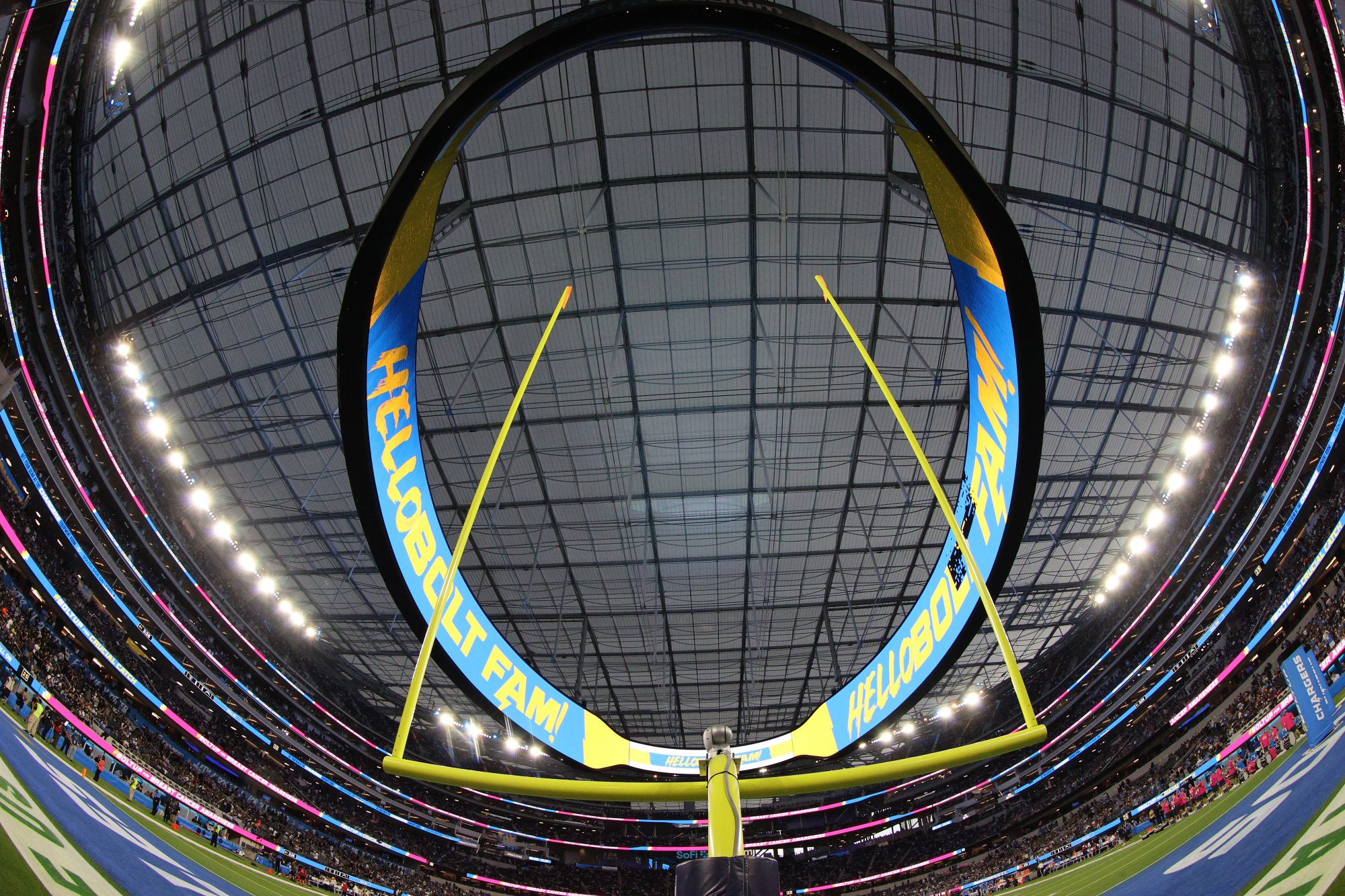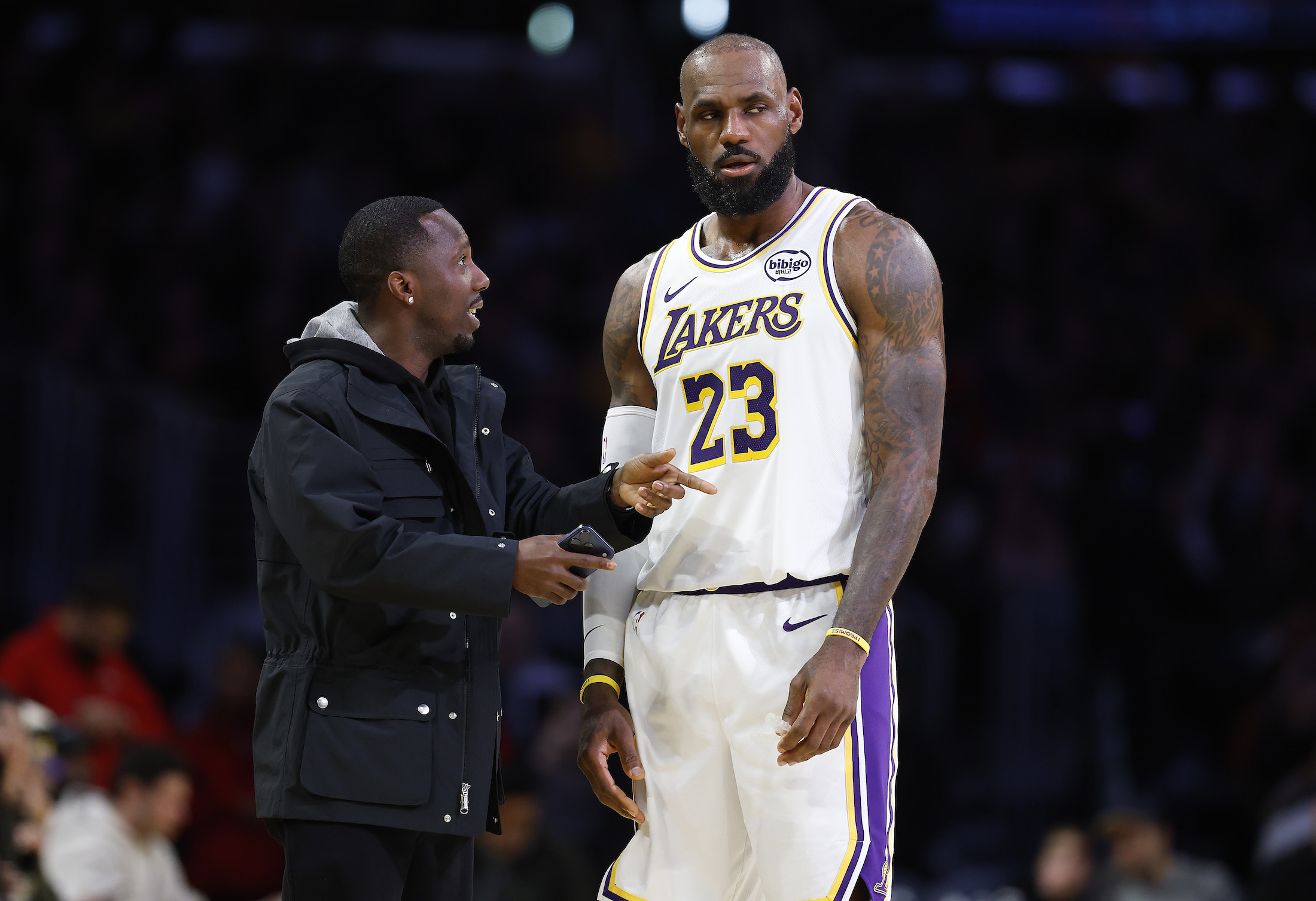It was a question that rang across social media Monday night, as a rare and impressive thunderstorm rolled across downtown Los Angeles and forced a 35-minute delay at the start of an eventual 28–14 Chargers win over the visiting Raiders: How can lightning safety be an issue inside a brand new $5 billion domed stadium? It has long been my understanding that the highest purpose of a sturdy roof is to keep out inclement weather, and lightning, to me, is among the most inclement of all weathers. Am I to understand that the roof over my head as I type my blogs will not stop a bolt of lightning from causing me to explode like an unkempt and out-of-shape cherry bomb?
Jon Gruden reacting to the storm delay. 😂 pic.twitter.com/fsoO2GLdXP
— Justin Groc (@justgroc) October 5, 2021
This evening's storms put on quite the show over Downtown Los Angeles! @RoadSageLA captured these lightning strikes just after sunset Monday night. https://t.co/uzWRPDHVor pic.twitter.com/B9xgBZj4kW
— CBS Los Angeles (@CBSLA) October 5, 2021
Turns out the matter maybe isn't quite as simple as it might seem to certain fair-haired head coaches. An advantage my roof, and your roof, and really all roofs have over the lid on this new stadium is that they are real-deal roofs, which connect to all the exterior walls and enclose the structure, sealing the inside in and the outside out. The Chargers' shiny home, by this definition, doesn't quite have a roof: The big curving sail of translucent plastic over its top is in fact a canopy, open at either end of the stadium, which allows what passes for fresh air in Southern California to enter the stadium, as well as all manner of airborne things. Could that include lightning? Hell yes, according to meteorologist Dennis Mersereau of DAM Weather, who confirmed for Defector Monday night that lightning could indeed "come right through the air holes on the side" of this building. Lightning, despite what you may have heard from Steve Young during ESPN's awkward lightning-delay huddle, in fact has no trouble traveling sideways. Mersereau says you are of course less safe from lightning in a building with gaping holes at either end than you would be in a fully enclosed one.
So it was both wise and encouraging that the people in charge of such things Monday night made an effort to practice good lightning safety. But! Delaying the start of the game and sending the players back to the locker room is really a half-measure if you're not going to evacuate the upper-deck areas of the stadium nearest the openings, where according to Mersereau fans would "more than likely" be in more danger from lightning. It's not clear the evacuation of these fans was part of the plan, or even if it was, that the effort was very successful:
Since people are firing off bits at a truly breathtaking rate: SoFi Stadium has a roof, but the sides are open. (See: yellow circle.) There is lightning in the area, hence the danger. pic.twitter.com/gKNCdkvx8a
— Daniel Popper (@danielrpopper) October 5, 2021
In general, you don't want to screw around with this stuff. Readers of a certain age may recall an incident way back in 2000, when a thunderstorm at Lane Stadium in southwest Virginia sent a bolt of lightning directly into the rental car of one Lee Corso, who was on-site to broadcast a game between Virginia Tech and Georgia Tech. Lightning struck all around VT's open-air stadium; officials were eventually forced to cancel the game, but without a coherent lightning safety and evacuation plan, the fans in attendance had to be crammed into the tunnels underneath the stands until the storm passed, a condition which presented its own set of safety issues.
No one was struck by lightning at the Chargers game Monday night. Though it may seem counterintuitive in a building covered by several million pounds of steel and plastic, postponing the start of the game until the storm passed was good work from authorities in a part of the world where lightning and thunder are not very often a consideration. It meant having to watch a half-hour of Young and Adam Schefter rudely talking over Suzy Kolber, but that is why mankind invented the remote control.
I know what you're thinking, because I had the same thought: What if instead of delaying the opening kickoff, stadium officials simply wrapped the midsection of one single brave individual in a dense coil of copper wire and sent him to run around on top of the building waving a long silver javelin, to attract all the lightning to his own tender torso? Couldn't he save the lives of dozens or even thousands of fellow fans, by absorbing hundreds of millions of volts of electricity, one bolt at a time? Wouldn't that person in fact be remembered as a hero, albeit one whose mortal remains were charred well beyond recognition?
"That person would be at great risk of getting hit by lightning," says Mersereau, "but it wouldn't be a lock to hit him instead of another part of the building. Think of all the trees that lightning misses when it hits the ground." So, no, this could not be a stadium's entire lightning safety protocol. Still, if the goal is a truly comprehensive lightning safety program, you must use every tool at your disposal.






